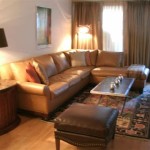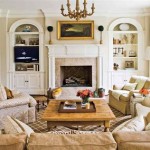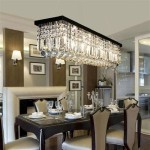Wall Wallpaper for Living Room: A Comprehensive Guide
Wall wallpaper, a versatile and enduring design element, offers a myriad of possibilities for transforming a living room. Its capacity to introduce color, texture, and pattern makes it a powerful tool for establishing atmosphere and reflecting individual style. Selecting the appropriate wallpaper requires careful consideration of factors such as room size, lighting, existing decor, and desired aesthetic.
This article provides a comprehensive overview of wall wallpaper for living rooms, encompassing various types, design considerations, installation techniques, and maintenance procedures. The aim is to equip readers with the knowledge necessary to make informed decisions regarding wallpaper selection and application, ensuring a visually appealing and long-lasting result.
Types of Wallpaper Materials
The selection of wallpaper material significantly impacts both the aesthetic and functional properties of the wall covering. Different materials offer varying levels of durability, washability, and ease of installation.
Vinyl Wallpaper: Vinyl wallpaper is a popular choice due to its durability and ease of cleaning. It is typically composed of a paper backing coated with a layer of vinyl. This coating makes it resistant to moisture, stains, and scratches, making it suitable for high-traffic areas or rooms prone to humidity. Vinyl wallpaper is available in various textures and patterns, including embossed and scrubbable options. Its durability makes it a good choice for families with children or pets.
Non-Woven Wallpaper: Non-woven wallpaper, also known as paste-the-wall wallpaper, is made from a blend of natural and synthetic fibers. This type of wallpaper is breathable, dimensionally stable, and easy to install. It does not expand or contract when wet, which minimizes the risk of bubbles and wrinkles during application. Non-woven wallpaper is also relatively easy to remove, making it a practical choice for those who enjoy changing their decor frequently.
Paper Wallpaper: Traditional paper wallpaper is made from paper and printed with various designs. While it offers a wide range of patterns and colors, it is less durable and more susceptible to damage than vinyl or non-woven options. Paper wallpaper is generally not recommended for areas prone to moisture or high traffic. It is also more challenging to clean and remove.
Fabric Wallpaper: Fabric wallpaper consists of a fabric surface bonded to a paper or non-woven backing. This type of wallpaper adds a luxurious and textured feel to a room. Fabric wallpapers, such as grasscloth or silk, can create a sophisticated and elegant ambiance. However, they are typically more expensive and require professional installation. They are also more difficult to clean and maintain than other types of wallpaper.
Flock Wallpaper: Flock wallpaper features a raised, velvety pattern created by adhering fibers to a paper or fabric backing. This type of wallpaper adds a tactile and opulent element to a room. Flock wallpaper is often used in formal living rooms or dining rooms to create a sense of luxury. However, it is more delicate and requires careful cleaning to prevent damage.
Removable Wallpaper: Removable wallpaper, also known as peel-and-stick wallpaper, is a convenient option for renters or those who want to experiment with different designs without committing to a permanent installation. It is typically made from vinyl or non-woven materials with a self-adhesive backing. Removable wallpaper is easy to apply and remove, making it a practical choice for temporary decor changes. However, its adhesive may not be as strong as traditional wallpaper, and it may not adhere well to textured walls.
Design Considerations for Living Room Wallpaper
Choosing the right wallpaper design requires careful consideration of various factors, including room size, lighting, existing decor, and personal preferences. The wallpaper design should complement the overall aesthetic of the living room and contribute to the desired atmosphere.
Color: The color of the wallpaper can significantly impact the perceived size and mood of a room. Light colors tend to make a room feel larger and brighter, while dark colors can create a more intimate and cozy atmosphere. Cool colors, such as blue and green, can evoke a sense of tranquility, while warm colors, such as red and yellow, can create a more energetic and inviting space. The existing color palette of the living room should be considered when selecting wallpaper colors. Coordinating the wallpaper with furniture, flooring, and accessories will create a cohesive and harmonious look.
Pattern: The pattern of the wallpaper can add visual interest and personality to a room. Large-scale patterns can make a small room feel even smaller, while small-scale patterns can create a more subtle and understated effect. Vertical stripes can make a ceiling appear higher, while horizontal stripes can make a room feel wider. Geometric patterns can add a modern and contemporary touch, while floral patterns can create a more traditional and romantic ambiance. The scale and complexity of the pattern should be carefully considered in relation to the size and style of the living room.
Texture: Textured wallpaper adds depth and dimension to a room. Embossed wallpaper can create a subtle raised pattern, while grasscloth wallpaper can add a natural and organic feel. Textured wallpaper can be used to conceal imperfections in the walls and add visual interest to a plain space. The texture of the wallpaper should complement the other textures in the room, such as the fabric of the furniture and the material of the flooring.
Scale: The scale of the wallpaper pattern should be proportionate to the size of the room. In a small living room, a large-scale pattern can be overwhelming, while a small-scale pattern can get lost. Conversely, in a large living room, a small-scale pattern may appear insignificant, while a large-scale pattern can create a dramatic impact. Consider the dimensions of the walls and the overall proportions of the room when choosing the scale of the wallpaper pattern.
Style: The style of the wallpaper should complement the overall style of the living room. In a traditional living room, a classic floral or damask pattern would be appropriate. In a modern living room, a geometric or abstract pattern would be a better fit. The wallpaper should reflect the personal style of the homeowner and create a cohesive and harmonious look with the other elements in the room.
Lighting: The amount of natural and artificial light in the living room can affect the appearance of the wallpaper. Dark colors will appear even darker in dimly lit rooms, while light colors will appear brighter. Consider the direction of the light and how it will interact with the color and texture of the wallpaper. It may be helpful to test a sample of the wallpaper in the room before making a final decision.
Installation and Maintenance of Wallpaper
Proper installation and maintenance are crucial for ensuring the longevity and appearance of wall wallpaper. Following the manufacturer's instructions and using appropriate tools and techniques will help prevent problems such as bubbles, wrinkles, and peeling.
Preparation: Before installing wallpaper, the walls must be properly prepared. This involves cleaning the walls to remove any dirt, dust, or grease. Any holes or cracks should be filled and sanded smooth. If the walls are painted with a glossy or semi-gloss finish, they should be primed with a wallpaper primer to ensure proper adhesion. The primer creates a porous surface that allows the wallpaper adhesive to bond effectively. Removing old wallpaper is a critical step. Using a wallpaper scoring tool and a wallpaper removal solution helps to loosen the adhesive, making it easier to peel off the old wallpaper. Any remaining adhesive residue should be removed using a sponge and warm water.
Application: The application of wallpaper requires precision and attention to detail. For traditional wallpaper, the back of each strip must be coated with wallpaper adhesive. The adhesive should be applied evenly and allowed to soak for the recommended time. For paste-the-wall wallpaper, the adhesive is applied directly to the wall. The wallpaper strip is then carefully aligned with the wall and smoothed out using a wallpaper brush or a smoothing tool. It is important to eliminate any air bubbles or wrinkles. Excess wallpaper at the top and bottom of the wall should be trimmed using a sharp utility knife. Overlapping seams should be avoided to create a seamless appearance. If overlapping is necessary, it should be done in a discreet location and kept to a minimum.
Cleaning: The cleaning requirements for wallpaper vary depending on the material. Vinyl wallpaper can be cleaned with a damp sponge and mild detergent. Paper wallpaper should be cleaned with a dry cloth or a vacuum cleaner with a brush attachment. Fabric wallpaper should be professionally cleaned to avoid damage. Avoid using harsh chemicals or abrasive cleaners, as they can damage the wallpaper surface. Regularly dusting or vacuuming the wallpaper will help prevent the buildup of dirt and dust.
Repairs: Small tears or rips in the wallpaper can be repaired using wallpaper paste and a small piece of matching wallpaper. The damaged area should be cleaned and the edges of the tear should be aligned. A small amount of wallpaper paste should be applied to the back of the patch and the patch should be carefully placed over the tear. Any excess paste should be wiped away with a damp cloth. For more extensive damage, it may be necessary to replace the entire strip of wallpaper. Professional assistance may be required for complex repairs.
Considerations for Durability: Selecting a durable wallpaper material and following proper installation techniques can significantly extend the lifespan of the wall covering. Vinyl wallpaper is generally more durable than paper wallpaper and is better suited for high-traffic areas. Using a wallpaper primer can improve adhesion and prevent peeling. Regularly cleaning the wallpaper and promptly repairing any damage will help maintain its appearance and prevent further deterioration.

Custom Modern White Marble Wallpaper Golden Line Wall Painting Living Room Tv Sofa Bedroom Home Decor Effect Paper Towel Holder Faux Panel Print Lazada

20 Feature Wall Ideas With Wallpapers Hello Circus

15 Best Elegant Living Room Wallpaper Ideas

Gold And White Geometric Living Room Wallpaper

Wall Murals For Living Room Shop Unique Mural Wallpaper By Uwalls

Shop Living Room Wallpaper 3 Year Color Warranty

Feature Wallpaper Wall Murals Made By Artists Feathr

20 Inspiring Living Room Wallpaper Ideas Best Decorating

Buy Collection Of Premium Wallpaper For Walls Life N Colors

9 Best Design Living Room Wallpaper Ideas
See Also








